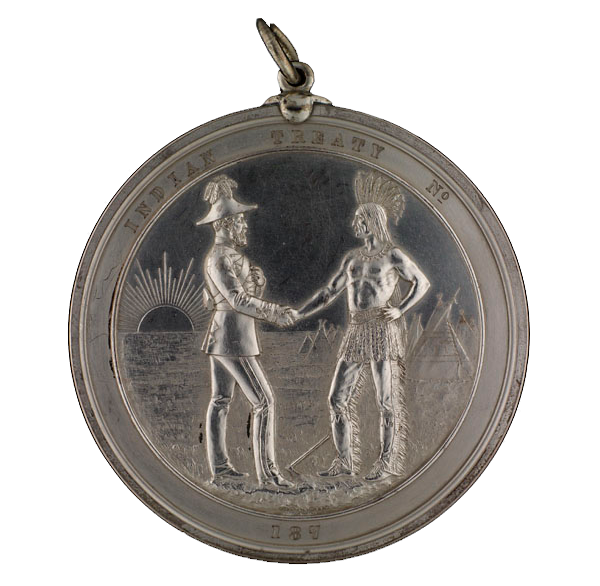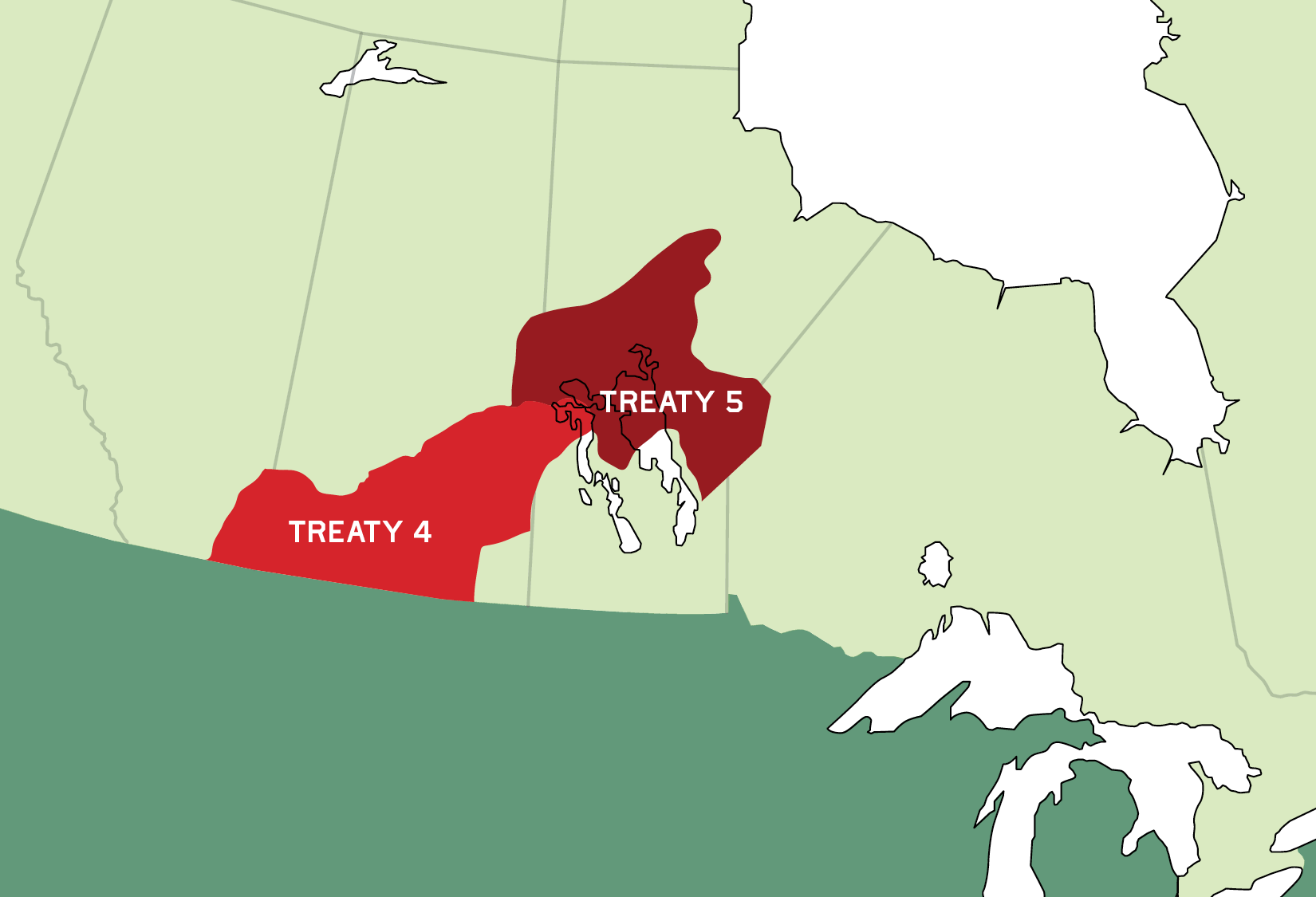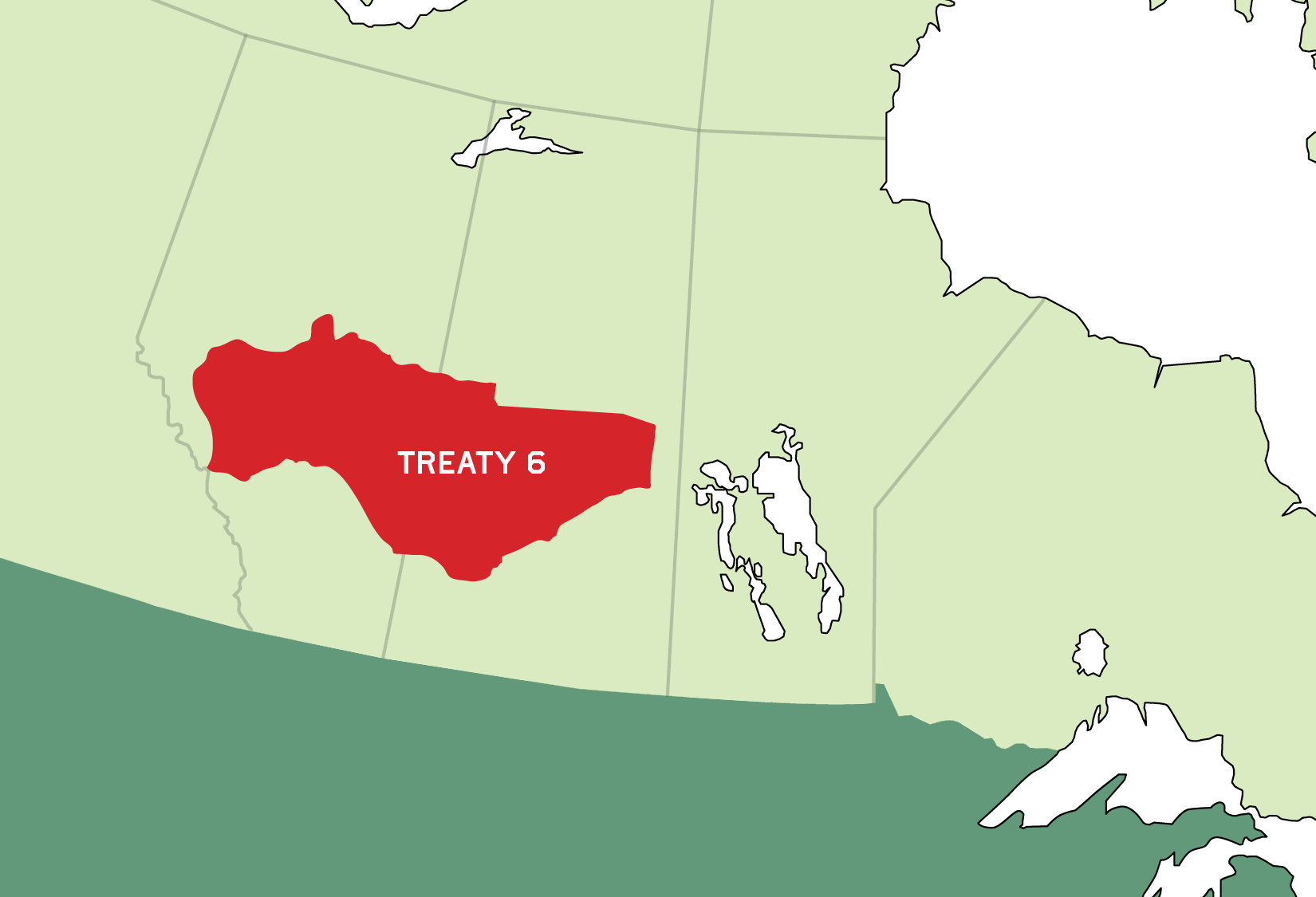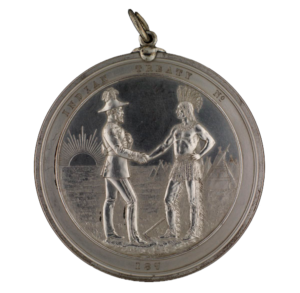Treaty 6, 1876

Treaty 6 Medal
We did our best to resist and tried to stop the invasion of our lands. Canada was telling the world they could come to our territories become the sovereign ruler. Thousands of Europeans heard the colonizer call and came and started to settle our lands without permission.
Cree leaders made it known they did not agree. Cree peoples stopped the building of a telegraph line in our territory and said, until a treaty was signed, no work would continue. In 1871, a Cree chief, Weekaskookeensayyin wrote to Canada describing these unacceptable changes.
“Our country is getting ruined of fur-bearing animals, our sole support and now we are poor…our country is no longer able to support us. We have had great starvation the past winter, and the smallpox took away many of our people, the old, young, and children.”
Many Cree leaders demanded Canada negotiate a treaty with us to prevent the theft of our land and the poverty that resulted from the loss of our land.
Cree peoples were very familiar with entering and honoring treaty agreements. We had our own treaties with Blackfoot and Saulteaux Nations that we continue to honour. We understand treaties as sacred agreements, made through ceremony, the pipe and through the exchange of gifts.
By 1875, two Cree leaders from our area, Ahtahkakoop and Mistawasis, demanded to meet with Canada to discuss making a treaty with Cree peoples. Mitstawasis asked if it was true what he heard that “men have told us the white man was coming to take our lands, along with white braves.”
Cree leaders were aware that treaties were reached with Cree peoples living southeast of the Saskatchewan River (Treaty 4, 1874), and with peoples living northeast of the Saskatchewan River (Treaty 5, 1875). Now we demanded a treaty was owed to the Crees living northwest of the Saskatchewan River.

Treaty 4 and Treaty 5 Map
Treaty Commissioners arrived at Fort Carleton during the summer of 1876. The Treaty Commissioner in charge was Alexander Morris. This was not Morris’ first treaty process. He also led Treaties 3 (1873), 4 (1874) and 5 (1875). Another Commissioner, a Metis man, James McKay was the translator.
Morris told Ahtakakoop, Mistawasis and Sweetgrass a treaty with Canada would mean Canada would treat the Crees well and we would be “well off”. Promises of a better life were made by the Treaty Commissioners to make sure Cree leaders signed the treaty.
The written terms of Treaty 6 included:
- a one-time cash payment of $12 for each Band member.
- an annual cash payment of $25 per Chief
- an annual cash payment of $15 per headman and,
- $5 for all other Band members.
Treaty Commissioners promised a secure place for homes they called an “Indian Reserve.” Treaty Commissioners promised the reserve could never be taken away or sold without our permission. They also promised no settlers would ever be allowed to enter.
The reserve size would be based on population for each community, where each person counted would amount to 128 acres. The Commissioner said Canada would create reserves and would help with farming but would not “interfere with their present mode of living.”
This was a very important treaty promise. Treaty 6 was supposed to guarantee our ability to continue to freely travel across our lands, and that we would not be interfered with. We expected we could continue to live our lives across our territories to make our living, like we always had.
There was no talk about selling our lands or giving up our sovereignty to Canada. We expected the treaty to set out how we would share the lands with the moniyaw.

Treaty 6 Map
There was so much resistance from some Cree leaders who did not want to sign treaty, Commissioner Morris had to include 3 new promises that were not found in any previous numbered treaties. This included:
- a medicine chest to be kept at the Indian agent’s house.
- more agricultural implements than provided for in earlier treaties and,
- a promise to protect people from famine and pestilence.
Canada also promised education, healthcare, and support in times of hardship or pestilence. White people called this welfare. We also understood we would share the land, but only to the depth of a plow. We would only share the first 6 inches of the land.

But none of these promises were properly recorded by Canada.
We marked the signing of Treaty 6 by sacred pipe ceremonies and exchange of important symbols, like a treaty medal. The pipe ceremony connected treaty promises to the Creator.
Cree leaders were asked to sign and respect the terms of Treaty 6, and we expected Canada to do the same.
